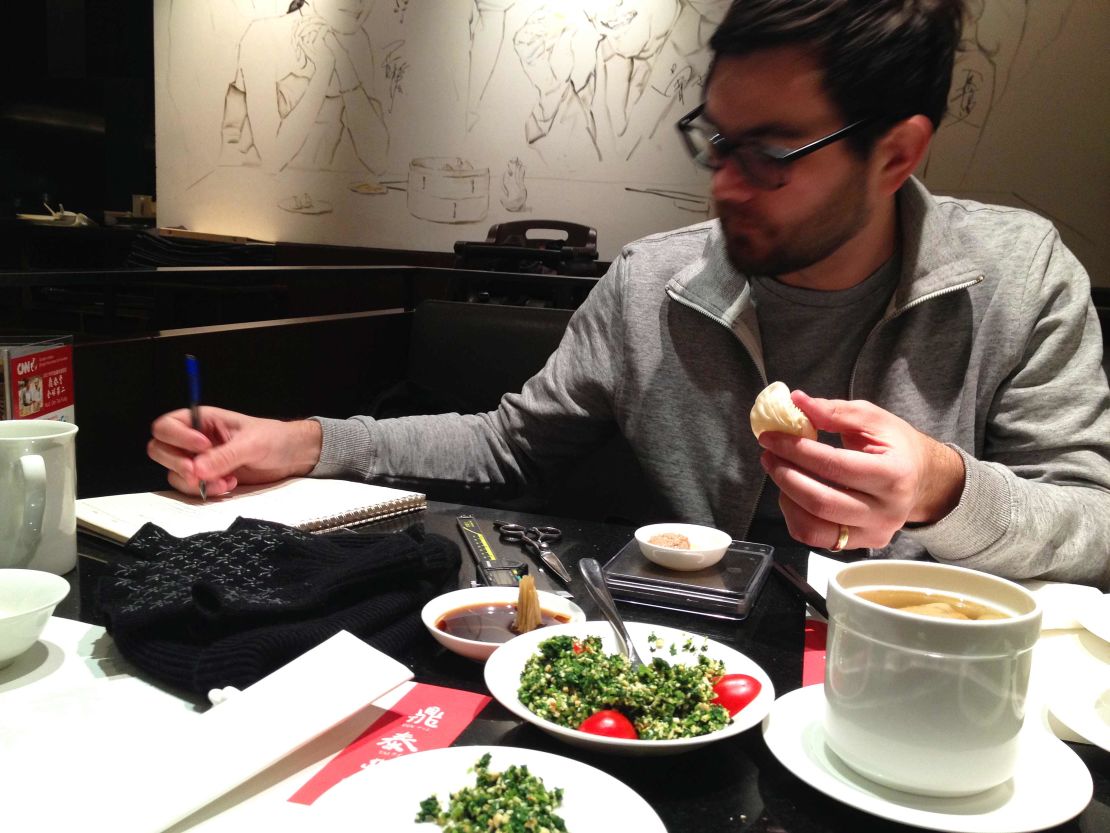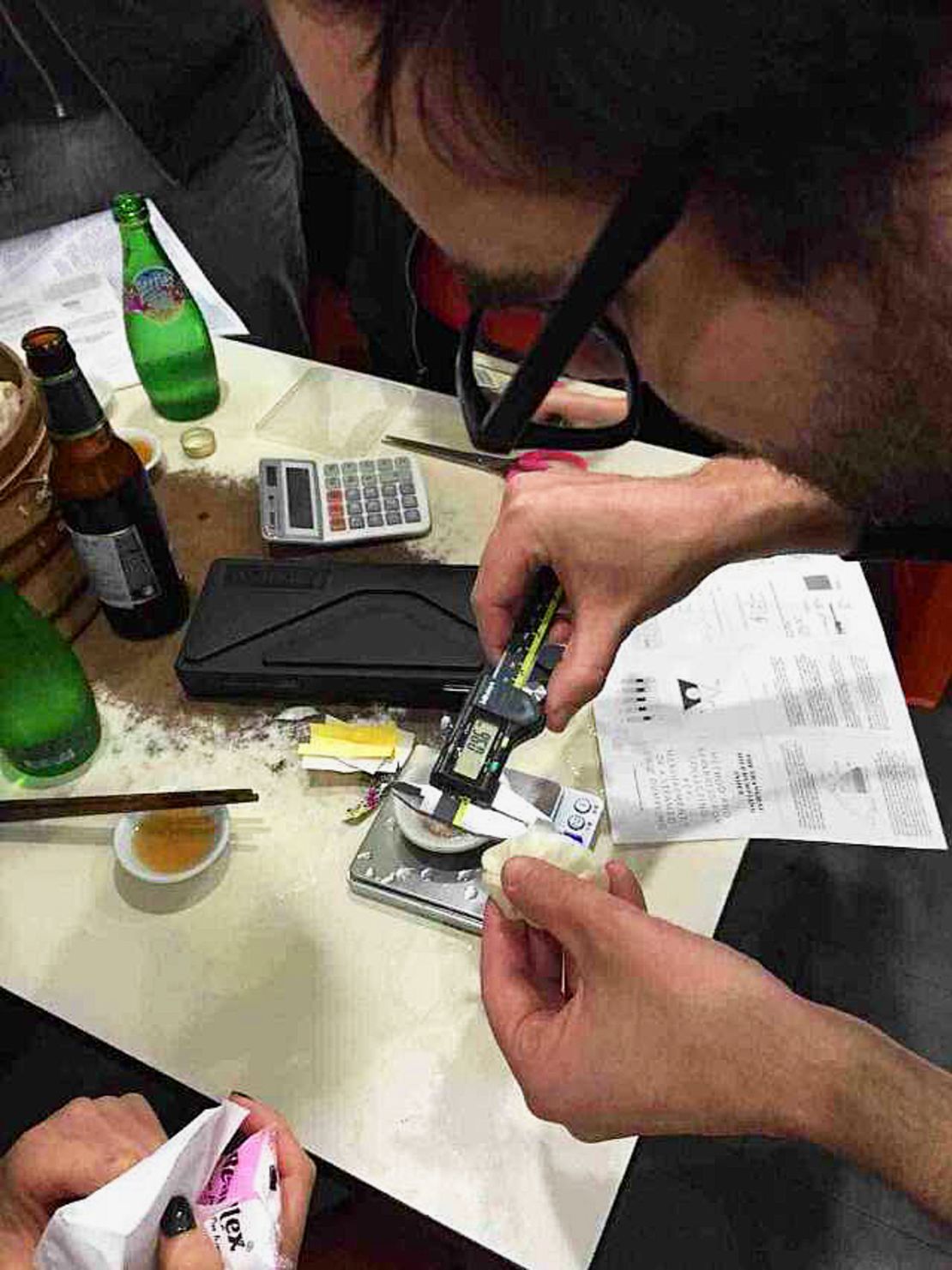This story complements the Culinary Journeys TV series, airing monthly on CNN International. See more of the show here: www.cnn.com/journeys. Share photos of your own Culinary Journeys on Instagram with the hashtag #CNNFood for a chance to be featured on CNN.
As scientific breakthroughs go, it may not rank alongside splitting the atom or discovering penicillin, but the work of Christopher St. Cavish shouldn’t be underestimated.
The former chef has expanded the horizons of knowledge, and his own belt size, by completing the world’s only forensic study of the Shanghai soup dumpling.
Soup dumplings, also called xiaolongbao, are tiny, steamed buns filled with meatballs and broth.
Christopher St. Cavish ate nearly 16 pounds of soup dumplings at 52 Shanghai restaurants over the course of a year – all in a dogged pursuit to find the city’s best.
They’re associated with southern China, and cities such as Shanghai are filled with restaurants that specialize in xiaolongbao.
The traditional filling is pork, but some spots branch out with seafood, truffle and more.
Eating these require special attention when you travel here – if you’re careless, you risk breaking the wrapper and spilling the soup.
Dumpling kings

After living in Shanghai for a decade, St. Cavish, was tired of bickering with people over which restaurant served the best soup dumplings in town.
So he set out to conduct the most scientific study he could muster to once and for all determine the dumpling kings.
St. Cavish’s tongue-in-cheek survey analyzes the ratio of soup and meat filling to the thickness of the dumpling skin, by measuring main components of a soup dumpling.
These include the dumpling wrapper (the thinner the better), the amount of soup (preferably lots), the pork meatball size (hopefully big) and the quality of meat in the filling (fresh is good).
“I’d weigh the whole dumpling … and then I’d tilt it by about 45 degrees and cut off the top, so the soup wouldn’t spill out,” he said.
“Then I would measure the weight of the soup, squeeze out the meatball and measure the weight of the meatball, and then I’d take out my calipers and measure the skin.”
St. Cavish did this for six dumplings at every restaurant – the standard size for a basket serving – recording measurements before plugging the numbers into a self-derived formula to arrive at a final score for each restaurant.
Restaurants were disqualified if St. Cavish caught a whiff of MSG, or if two out of six soup dumplings broke – a sign that a poorly made xiaolongbao can’t carry the weight of its meat and soup filling.
Recreating the experiment
Inspired by St. Cavish’s spirit, I decided to replicate his study in Hong Kong at a branch of Din Tai Fung, a Taiwanese chain reputed for its soup dumplings.
Unlike St. Cavish – who used a digital scale to weigh dumpling parts in grams, a digital caliper to measure the skin in fractions of a millimeter – I was relying on a phone app and my refined taste buds. (As a Taiwanese who grew up eating xiaolongbao, I consider myself an expert.)
My first dissection involved a crab soup dumpling, which weighed 6.97 grams in its entirety, according to a scales app on my phone.
I chomped off the top of the dumpling to pour the soup out, which weighed 0.945 grams.
But I failed entirely to extract the crab meatball in one piece, and instead decided to eat my dumpling study sample piecemeal: soup, meatball, then skin.
I had better luck getting the meatball of a pork soup dumpling out in one piece (1.89 grams).
But something seemed amiss.
St. Cavish’s dumpling samples were all in the 20 grams and above range –so either I was getting gypped with smaller-than-usual dumplings, or my app wasn’t working properly.
Without special calipers, I was forced to improvise on measuring skin thickness by simply eyeballing it.
I could say the wrappers looked very thin, and were nearly transparent when held up to the light.
I can also say with authority that both flavors – crab and pork – were equally delicious, after I ate a representative sample of 12 delicious xiaolongbao at Din Tai Fung.
That’s only a fraction of the more than 300 soup dumplings St. Cavish chomped on to create his definitive dumpling index.
St. Cavish’s soup dumpling science

St. Cavish doesn’t appear to be suffering from soup dumpling overload.
He says he’s still not sick of eating them, even though he’s put on a few pounds in the course of his scientific dumpling study.
“The dirty secret is that I was never in love with them,” he laughs. “But I really like them and I appreciate them more after I’ve been to so many places.”
St. Cavish’s Shanghai Soup Dumpling Index is available online for $3.
Here are some of his top picks:
Zun Ke Lai (666 Tianyaoqiao Lu, Shanghai): Dumpling: 27.1 grams; soup: 5.08 grams, or 19% of dumpling; meatball: 12.42 grams, or 46%; skin: 0.72 millimeters.
Taibei Mingchu (429 Guyang Lu, Shanghai): Dumpling: 26.03 grams; soup: 5.75 grams, or 22%; meatball: 10.82 grams, or 42%; skin: 0.9 millimeters.
Jade Garden (3/F, Hong Kong Plaza, 283 Huaihai Zhong Lu; Shanghai): Dumpling: 28.93 grams; soup: 7.09 grams, or 25%; meatball: 10.57, or 37%; skin: 0.98 millimeters.
Din Tai Fung (1/F Shanghai Centre, 1376 Nanjing Xi Lu, Shanghai): Dumpling: 23.5 grams; soup: 5.02 grams, or 21%; meatball: 9.39 grams, or 40%; skin: 1.04 millimeters.
Nanjing Tangbao (641 Jianguo Lu, Shanghai); Dumpling: 28.1 grams; soup: 5.01 grams, or 8%; meatball: 10.53 grams, or 37%; skin: 1.23 millimeters.
Jia Jia Tang Bao (90 Huanghe Lu, Shanghai); Dumpling: 26.26 grams; soup: 5.78 grams, or 22%; meatball: 8.6 grams, or 33%; skin: 1.15 millimeters.







